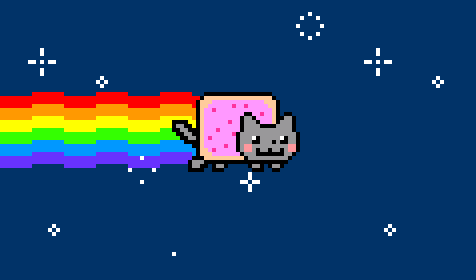Remember the cricket, football and WWF stat cards from the 90s? Non-fungible tokens or NFTs are kind of the twenty-first century’s version of those, but on the public blockchain. And they’ve become pretty highly priced investments. The New York Times has a great long read on them:

On Thursday, he put a one-of-a-kind version of [an animated flying card] up for sale on Foundation, a website for buying and selling digital goods. In the final hour of the auction, there was a bidding war. Nyan Cat was sold to a user identified only by a cryptocurrency wallet number. The price? Roughly $580,000.
_Other digital tokens recently sold include a clip of LeBron James blocking a shot in a Lakers basketball game that went for $100,000 in January… _
Lindsay Lohan sold an image of her face for over $17,000 and, in a nod to cryptocurrencies like Bitcoin, declared, “I believe in a world which is financially decentralized.” It was quickly resold for $57,000
Justin Blau, a D.J. who goes by 3LAU, [has] sold more than $1.1 million worth of digital art and music… Last week, he announced plans to offer a full album as an NFT
The article explains NFTs like this:
The buyers are usually not acquiring copyrights, trademarks or even the sole ownership of whatever it is they purchase. They’re buying bragging rights and the knowledge that their copy is the “authentic” one.
For me, the best way to understand the concept of NFTs is in terms of the Mona Lisa. We’ve all seen a picture of it. We’ve seen mockups, mashups, memes, animations and all kinds of variations of it. We can hang a print of it in our living room the exact dimensions as the original.
But there’s only one ‘real’ painting, and we all take the Louvre’s word that it’s the authentic one. In the case of something that is a non-fungible token, it’s the public blockchain that sets in stone the authenticity of one instance of it. In the case of Nyan Cat, the animated ‘cat-with-pop-tart-body-zooming-leaving-a-rainbow-trail’, I have a GIF of it in my camera roll, but only one person owns the Nyan Cat animation.

Again, the Times:
In an NFT sale, all the computers hooked into a cryptocurrency network record the transaction on a shared ledger, a blockchain, making it part of a permanent public record and serving as a sort of certification of authenticity that cannot be altered or erased.
It’s hard to grok anything digital being an authentic copy because we’ve all become used to copying (pirating?). But the analogy to paintings, or any other ‘real’ artwork, still holds. And therefore,
[Buyers] are trying to make a quick buck as cryptocurrency prices surge. Many see it as a form of entertainment that mixes gambling, sports card collecting, investing and day trading.
The market for NFTs began to pick up last year, with more than 222,000 people participating in $250 million worth of sales, quadrupling the volume in 2019, according to Nonfungible.com
Bonus: read the New York Times’ coverage of really the first breakout NFT hit, Crypto Kitties in 2017.

It was huge back then, so big that it slowed down all transactions on the public Ethereum blockchain for several days. These two paragraphs explain the wild stuff that digitisation and the blockchain makes possible:
Each kitty has a core “DNA” on the blockchain, and the game is basically to mate them (the illustrators do not go deep into specifics) and see what kitty results. The progeny tend to have their parents’ traits (an expensive cat will have an expensive kitten) but might surprise or disappoint with more or less valuable traits than either of its parents.
There’s a limited number of highly desirably first-generation kitties and four billion possible combinations of cats based on traits the on-staff artists have created (whisker aesthetic, background color, fur type). The company gets a 3.75 percent cut of the breeding and selling auctions.